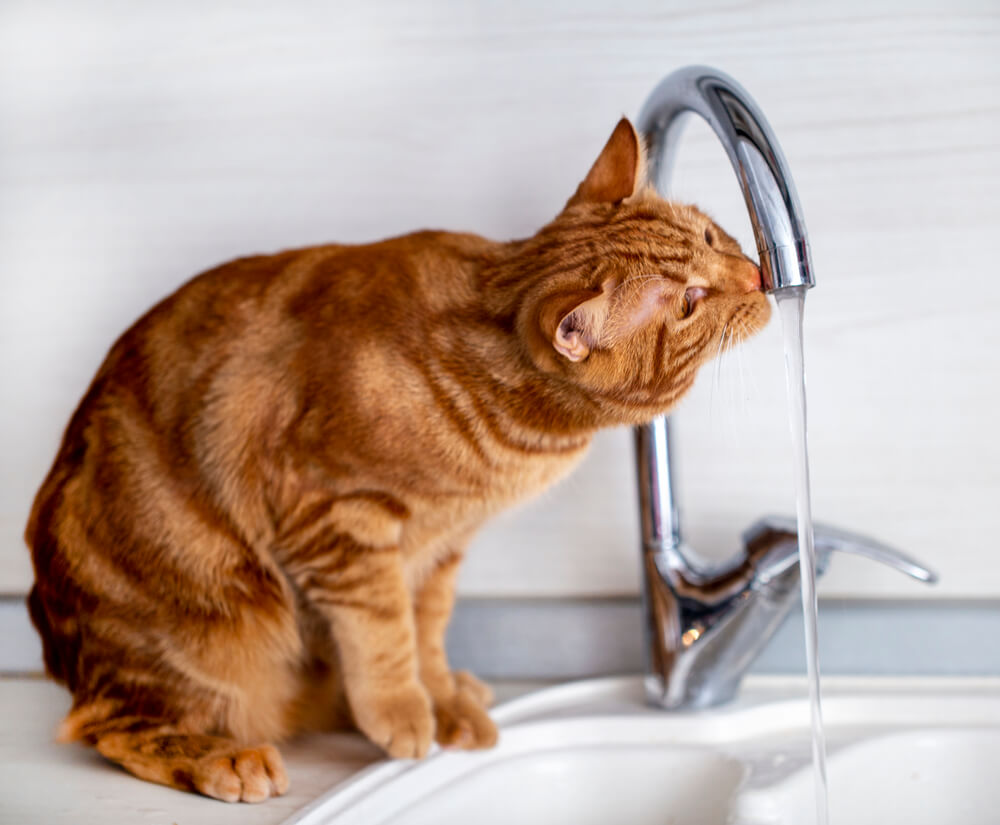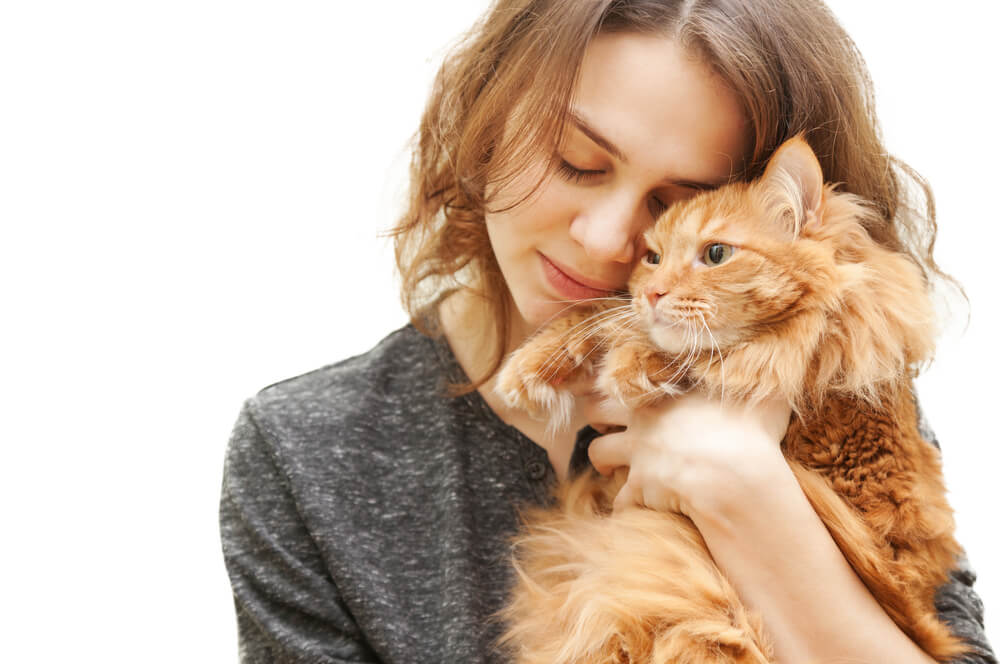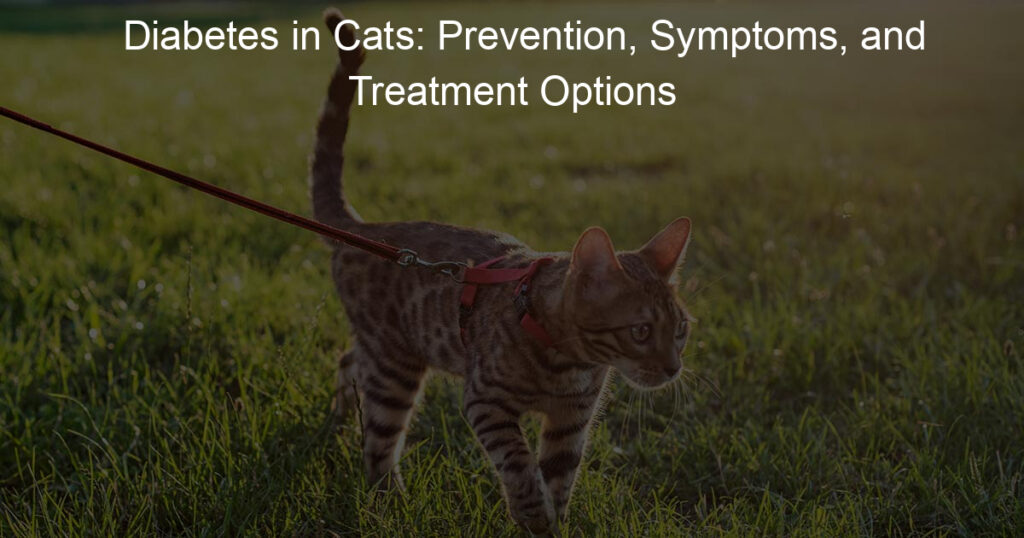Diabetes is not just a disease that affects humans; it can also impact our feline companions. Cats, like people, can develop diabetes, a chronic condition that affects their ability to produce and regulate insulin.
Understanding more about diabetes in cats is vital for pet owners to provide proper care and management of this medical condition.
Feline diabetes typically occurs in two forms:
Type I, where the cat’s body produces little to no insulin, and Type II, where the cat’s body becomes resistant to the effects of insulin.
Both types can lead to health complications, making early detection and proper treatment of utmost importance. With prompt attention and appropriate care, most cats with diabetes can live happy, healthy lives.
Key Takeaways
- Diabetes can affect cats and comes in two forms: Type I and Type II
- Early detection and proper treatment are vital for managing feline diabetes
- With appropriate care, most cats with diabetes can live healthy lives
Comprehending Diabetes in Cats

Diabetes, specifically diabetes mellitus, is a common disease that affects not only humans but also our feline friends. As a cat owner, I’ve made an effort to understand the condition of cats so I can ensure the best care for my pets.
In cats, diabetes mellitus is the result of either insufficient production of insulin by the pancreas or the inability of cells to respond effectively to the hormone.
Insulin is crucial for regulating blood glucose levels by allowing glucose to enter cells, where it can be utilized for energy.
Cats can suffer from two types of diabetes: Type 1 and Type 2. Type 1 diabetes occurs when the pancreas cannot produce enough insulin, while Type 2 diabetes happens when cells become resistant to insulin.
In either case, blood glucose levels remain high, which can lead to various health issues if left untreated.
Feline diabetes can present itself through various symptoms, including increased thirst, frequent urination, weight loss, and lethargy. Identifying these signs early can be vital for proper management and treatment.
For a cat diagnosed with diabetes, their blood glucose levels should be regularly monitored and controlled through insulin therapy, dietary changes, and regular veterinary check-ups.
Managing diabetes in cats is an ongoing process that requires time, patience, and commitment from the owner. Understanding the basics of the condition and working closely with a veterinarian can help my furry friends lead healthy, happy lives despite their diagnosis.
Causes and Risk Factors

In my experience, there are several causes and risk factors that can contribute to the development of diabetes in cats. One of the primary factors is age. As cats get older, their risk of developing diabetes increases.
This is because their bodies may become less efficient at producing and regulating insulin, the hormone responsible for regulating their blood sugar levels.
Another significant risk factor is obesity. Overweight and obese cats are more prone to developing diabetes, as excess body fat can lead to insulin resistance.
It is critical for cat owners to maintain their pets’ weight within a healthy range, as obesity can also place additional strain on their joints, heart, and other organs.
Gender also plays a role in the likelihood of a cat developing diabetes. Males are generally more susceptible to the disease than females, although both genders can be affected.
Some studies suggest that neutered males may be at an even higher risk, highlighting the importance of monitoring their health closely.
Stress can also contribute to the development of diabetes in cats. When they are under stress, their bodies release hormones that can interfere with insulin production and regulation.
Ensuring cats have a comfortable and stress-free environment can help minimize the risk of developing diabetes.
Other medical conditions, such as hyperthyroidism, can also increase a cat’s risk of diabetes. This is because they can cause disruptions in their metabolic processes that interfere with insulin regulation.
It’s essential to be aware of the causes and risk factors for diabetes in cats. Monitoring their health, maintaining a healthy weight, and providing a stress-free environment can all contribute to minimizing the risk.
Signs and Symptoms of Diabetes

Common Symptoms
As a cat owner, it’s essential to know about common symptoms of diabetes in your feline friend. One of the most noticeable signs is increased urination. You may observe that your cat visits the litter box more frequently and produces more urine. This often goes hand-in-hand with increased thirst; a diabetic cat will typically need more water throughout the day.
Another common symptom of diabetes in cats is weight loss. Despite having an increased appetite, weight loss occurs because the body cannot turn glucose into energy due to a lack of insulin.
This can also lead to weakness and lethargy, making your cat appear less active than usual.
Related Issues
Unfortunately, other health issues can arise in diabetic cats if the disease remains undetected or untreated. Dehydration is a concern, as the increased water intake may not be sufficient to compensate for the excessive urination.
In such cases, it’s crucial to ensure your cat has access to enough water.
In some instances, diabetic cats may experience vomiting or a loss of appetite. These symptoms can be particularly concerning as they could indicate an underlying issue, such as diabetic ketoacidosis, which is a life-threatening emergency.
If your cat shows any of these signs, it’s essential to consult your veterinarian without delay.
Remember that early detection and management are crucial for your cat’s health. By observing your cat carefully and being attentive to the signs and symptoms of diabetes, you can help ensure your pet lives a happy and healthy life.
Diagnosing Feline Diabetes

As a knowledgeable and confident cat owner, I know that diagnosing feline diabetes often begins with a visit to the veterinarian. When I suspect that my cat may have diabetes, it’s essential to recognize the clinical signs, such as increased thirst or urination, along with weight loss or a change in appetite.
During the initial assessment, the veterinarian will usually take a blood glucose test to measure the glucose levels in my cat’s blood. Elevated blood glucose levels often indicate the presence of diabetes, but the results could also be influenced by factors such as stress.
Consequently, the veterinarian may also check urine for glucosuria or the presence of glucose. Identifying glucose in the urine is another strong indication of feline diabetes.
To further confirm the diagnosis, a fructosamine test might be recommended by the veterinarian. This test involves taking a blood sample and measuring the level of fructosamine, which represents the average blood glucose level over the past few weeks.
Fructosamine tests provide a more accurate and reliable picture of my cat’s glucose levels, as it is less affected by stress and other temporary factors.
Diagnosing feline diabetes typically requires a combination of clinical signs, blood tests, and urine tests. With the guidance of a veterinarian and a thorough examination, I can get a clear and accurate diagnosis for my cat, allowing me to make informed decisions about their care and treatment.
Diabetes Treatment and Management

Insulin Treatment
In managing diabetes in cats, I find that insulin injections are crucial. Insulin is a hormone that helps regulate blood sugar levels. As a cat owner, I administer injectable insulin to my diabetic cat as prescribed by the veterinarian.
Some common types of insulin used for cats include Vetsulin and Prozinc. It is important to use the appropriate type of insulin and follow the correct dosage and frequency as prescribed by the veterinarian.
I monitor my cat’s blood sugar levels regularly using a glucometer. This allows me to adjust the insulin injections accordingly to ensure that the blood sugar levels remain within the target range.
Additionally, I watch out for any signs of diabetic neuropathy, such as weakness, difficulty walking, or changes in gait.
Dietary Management
Apart from insulin therapy, managing my cat’s diet plays a significant role in controlling diabetes. I focus on providing a low-carbohydrate and high-protein diet, as carbohydrates can increase blood sugar levels, while protein helps maintain stable blood sugar levels.
Here are some guidelines I follow for my cat’s diet:
- Limit dry food, as it typically has a high carbohydrate content
- Choose canned or wet food with low carbohydrate content
- Include high-protein sources, such as chicken or turkey
By combining insulin treatment and dietary management, I can effectively manage my cat’s diabetes. Regular check-ups with the veterinarian are essential to monitor progress and make any necessary adjustments in treatment.
In some cases, with proper management, cats can even achieve diabetic remission, meaning their blood sugar levels return to normal without the need for insulin injections.
Possible Complications and Prognosis
As a cat owner and a diabetic cat caretaker, I am well aware of the possible complications that can arise from this condition. One of the most serious issues is diabetic ketoacidosis, which is a life-threatening condition caused by a severe lack of insulin in the body.
This can lead to a buildup of ketones, acidic chemicals that can cause the blood to become acidic. Symptoms include vomiting, dehydration, and lethargy.
Another potential complication is hypoglycemia or low blood sugar. This can occur if a cat is given too much insulin or the cat’s body begins to produce its own insulin.
Hypoglycemia can be dangerous for a cat and requires prompt treatment, which can include administering glucose or feeding the cat if they are conscious.
Monitoring blood sugar levels and maintaining glycemic control is crucial for diabetic cats. Hyperglycemia, or high blood sugar, is often the result of inconsistent insulin administration or dietary inconsistencies.
In turn, this can lead to various issues for the cat, such as urinary tract infections, which are common in diabetic cats due to the increased production of urine (polyuria) and excessive thirst (polydipsia).
As with humans, diabetes in cats can also lead to kidney disease, which occurs when the kidney’s ability to filter waste and toxins becomes compromised.
This is particularly concerning for diabetic cats, as their kidneys are already under additional stress due to frequent fluctuations in blood sugar levels.
The prognosis for diabetic cats varies depending on several factors, including the cat’s age, the severity of the condition, and the owner’s ability to manage and monitor the disease. With proper care, many diabetic cats can still live a high-quality life and have a similar lifespan to non-diabetic cats.
Regardless, it is crucial for me – and any cat owner – to work closely with a veterinarian to regularly monitor and treat the condition as needed.
Ultimately, the key to managing diabetes in cats lies in prevention or early detection, regular monitoring of blood sugar levels, and consistent treatment and care.
Knowledge, consistency, and commitment to following the guidance of a veterinarian can help greatly improve the quality of life and overall prognosis for diabetic cats.
Preventing Diabetes in Cats

Lifestyle Considerations
One important aspect of preventing diabetes in cats is maintaining a healthy lifestyle. This begins with proper diet and nutrition. Offer high-quality, low-carbohydrate, and high-protein food to your cat to keep their blood glucose levels stable.
Additionally, refrain from feeding them table scraps or unhealthy treats, as these can contribute to weight gain.
Weight loss and exercise are also essential in diabetes prevention. If your cat is overweight, work on developing a weight loss plan with the help of your vet. Offer more opportunities for exercise by engaging in play sessions or providing toys that encourage physical activity.
Encourage your cat to be active by placing their food bowl or treats in different locations, requiring them to move and explore.
Stress management plays a significant role in maintaining your cat’s overall health. Stress may lead to stress hyperglycemia, affecting blood glucose levels.
By providing a safe and calm environment, you can reduce stress-related health issues.
Medical Interventions
In addition to lifestyle changes, there are medical interventions that can help in preventing diabetes in cats. Regular veterinary check-ups are crucial for early detection and management of potential health issues like obesity and stress.
Monitoring your cat’s blood glucose and insulin levels can also help you stay informed about their overall health.
Type 1 diabetes is rare in cats, but it occurs when their pancreas fails to produce enough insulin. In such cases, commitment to insulin injections is necessary.
On the other hand, type 2 diabetes is more common and often linked to obesity and sedentary lifestyles. It requires a combination of medical and lifestyle interventions to manage effectively.
The key to preventing diabetes in cats lies in a combination of lifestyle factors and medical interventions. Maintaining a healthy diet, encouraging exercise, managing stress, and having regular check-ups can significantly reduce the risk of your cat developing diabetes and ensure a higher quality of life.
Frequently Asked Questions
What causes diabetes in feline?
Diabetes in felines is typically caused by a combination of factors, including genetic predisposition, obesity, and lack of exercise. Insulin resistance and insufficient insulin production are the primary causes of feline diabetes.
How to test cats for diabetes?
To test a cat for diabetes, a veterinarian will usually conduct blood and urine tests. Blood tests measure glucose levels, while urine tests detect the presence of sugar (glucose) in the urine, indicating the possibility of diabetes.
What are the symptoms of feline diabetes?
The symptoms of feline diabetes can vary, but some common signs include excessive thirst, increased urination, weight loss, lethargy, poor coat condition, and appetite changes. If you notice any of these symptoms in your cat, consult with your veterinarian for proper diagnosis and treatment.
How long can a cat live with diabetes?
A cat can live a long and healthy life with diabetes, provided they receives proper treatment and management. With appropriate insulin therapy, diet modifications, and regular check-ups, a diabetic cat’s lifespan might not be significantly different from a non-diabetic cat.
Is a cat with diabetes in pain?
A cat with diabetes might not be in pain due to the condition itself; however, complications can lead to discomfort. For example, untreated diabetes can lead to nerve damage and painful conditions like diabetic neuropathy. Proper diabetes management can help prevent such complications and keep your cat pain-free.
What triggers diabetes in cats?
Feline diabetes triggers can be multifactorial. Factors such as genetics, obesity, inactivity, and age can contribute to the development of diabetes in cats. Additionally, certain medications, like steroids, can increase the risk of diabetes. Maintaining a healthy weight and engaging in regular physical activity can help reduce the likelihood of your cat developing diabetes.












